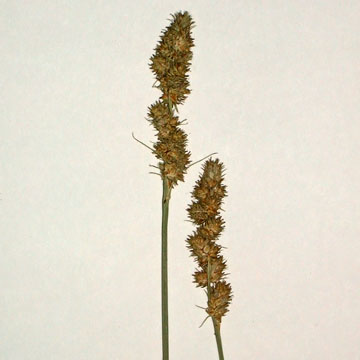

Carex annectens - (image 1 of 4)
Taxonomy
Family: Cyperaceae
Section Multiflorae
Synonymous with C. vulpinoidea var. ambigua, C. brachyglossa, and C. xanthocarpa var. annectens
Habitat
Dry to moist open areas, often in calcareous soils.
Associates
Distribution
ME and Quebec to SC, west to MN, NE, KS, OK, and LA. More common in coastal states.
Morphology
Similar to C. vulpinoidea but the leaves are shorter than the flowering stems and the perigynia are golden brown to orange-yellow (vs. pale brown) and usually ovate to suborbicular (vs. elliptic) and short-beaked (vs. 0.8-1.2 mm, 1/3 to 1/2 the length of the perigynium). It is also less restricted to wet areas.
Notes
Fruiting July to August
Wetland indicator: FACW
Plants with short, nerveless perigynia (2.2-2.6 mm), more compact inflorescences, and beaks very short and point-like have been called var. xanthocarpa (Kükenthal) Wiegand, though this variety is generally not recognized.
References
Ball, P.W. and A.A. Reznicek. 2002. Carex, In: Flora of North America Editorial Committee, Eds. Flora of North America North of Mexico. Volume 23. Oxford University Press, New York.
Gleason, Henry A. and A. Cronquist. 1991. Manual of Vascular Plants of
Northeastern United States and Adjacent Canada. Second Ed.
The New York Botanical Garden. Bronx, NY
|
© Michael Hough 2018 |